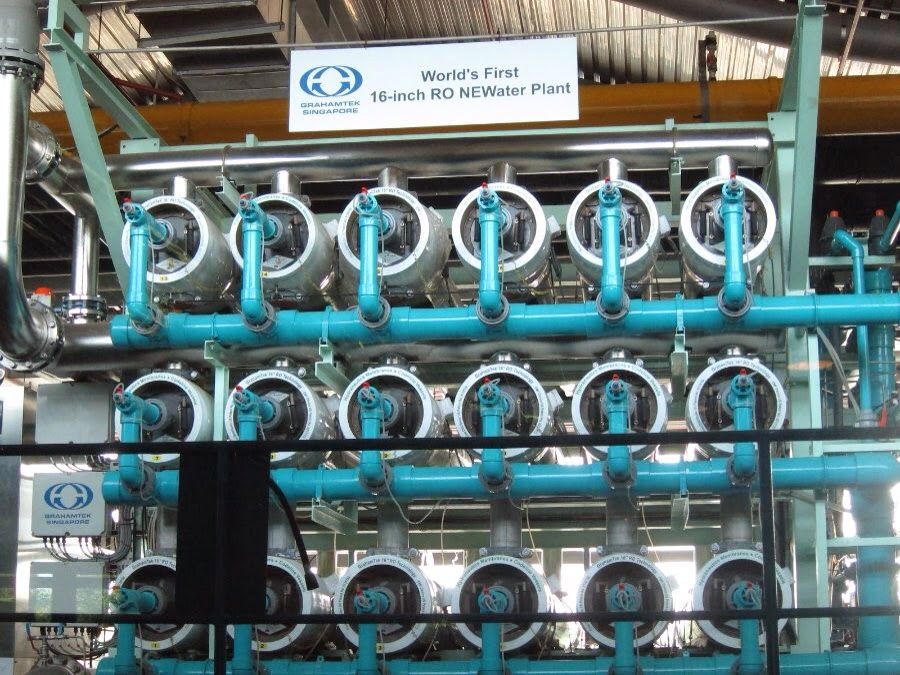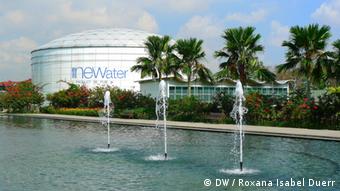Singapore is one of Asia’s most powerful economies, but it lacks a reliable water supply. Wastewater-reuse plants could change that by soon recycling enough sewage to meet 50 percent of the nation’s water needs.
The concept of recycling wastewater certainly isn’t new, with long-running initiatives already well underway in Israel, Spain, Scandinavian countries and the US. But with NEWater, Singapore has quickly gained an international reputation for efficient recycling of wastewater. The initiative already supplies around one third of the country’s water demand, and that number is expected to grow to more than half by the year 2060.
There are now four purification plants across Singapore producing 430 million liters of NEWater a day. The majority of what’s produced is consumed by industry or by big cooling facilities. The rest is combined with nutrient-rich reservoir water, purified again and filled into bottles.
The bottles are not for sale, and the environment ministry says it has no plans to change that. Instead, they’re distributed at major events to help raise awareness about the project. Officials have also set up a visitor’s center offering daily tours for tourists and schoolchildren to share more information with the public.

Today, around five percent of tap water in Sinapore comes from NEWater. During the dry months, reserves in Singapore’s rainwater reservoirs fall rapidly and officials have to supplement the supply with greywater. “With NEWater, we’re les dependent on the weather,” George Madhavan says. “This ultra-clean high-grade recycling water is a success story for Singapore and it’s a cornerstone of our sustainable water management system.”
The technology for recycling sewage into drinking water is not new. Sewage water is filtered to extract larger particles, bacteria and viruses. Then, through reverse osmosis, membranes refine the water again, sifting out further contaminants and getting rid of any disease-causing agents. Finally, ultraviolet disinfection is used to make sure the water is truly pure and ready to use.
At the end, the final product even exceeds the FAO’s safety standards. Over the last ten years, the initiative has moved beyond economic necessity and turned into a strategic priority for Singapore. The government’s 100-year water contract with neighboring Malaysia is scheduled to expire in 2061, and the city-state intends to set up its own independent supply before that happens.
Grey water recycling with Pontos AquaCycle
Because water is too precious to be wasted
Hansgrohe SE is a pioneer of grey water recycling. For example, the custom-designed and manufactured. Pontos AquaCycle system treats waste water from the shower and bath tub for reuse. This process water is used where drinking water quality is not required. This not only reliably conserves resources, but also saves costs. The water quality is consistently high and meets the hygiene requirements of the EU Bathing Water Directive.
Grey water recycling with Pontos AquaCycle means:
- Recycling waste water in a patented biological/mechanical process-without chemical additives
- The grey water is cleaned in a multi-stage process and disinfected by UV-radiation – in a manner that is gentle and energy-saving
- Fully automated, closed recycling system with a low-maintenance, non-weather-dependent cleaning procedure.
Where is the process water reused?
- Toilet flushing
- House cleaning
- Road cleaning
- Green area watering
- Car washing etc.
Who can use Pontos AquaCycle?
- Housing estates, apartment buildings, student halls of residence
- Swimming pools and urban cleaning services
- The hotel industry
- Leisure, sports and fitness centres
http://www.hansgrohe.com.sg/

